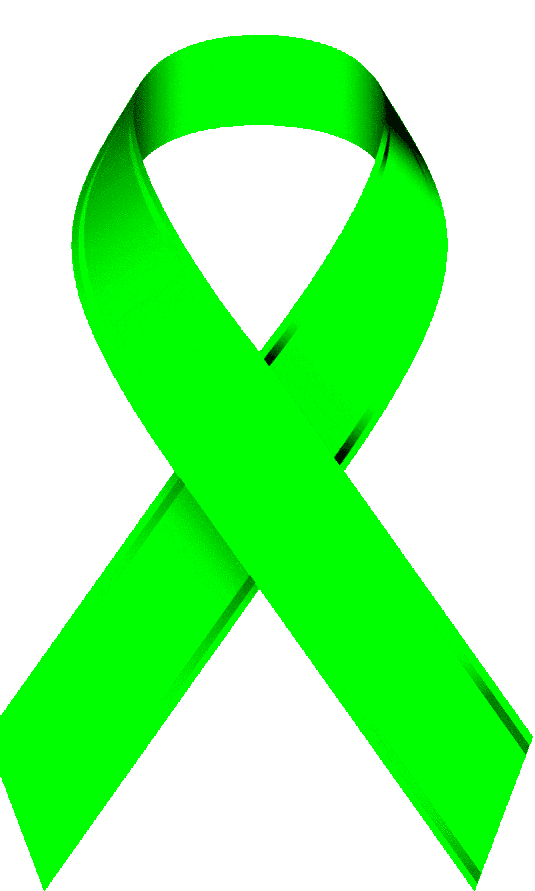Cancer awareness ribbons have become a universal symbol for supporting individuals affected by various forms of cancer. Among these, the green cancer ribbon holds significant meaning, representing cancers that are often overlooked but equally important. In this comprehensive guide, we will delve into the significance of the green cancer ribbon, the types of cancer it represents, and how you can contribute to raising awareness.
The green cancer ribbon is more than just a piece of fabric; it is a powerful emblem that unites communities in the fight against cancer. By understanding its meaning and purpose, we can work together to support those battling the disease and honor those taken by it.
Whether you're a survivor, a caregiver, or someone who wants to make a difference, this article will provide valuable insights into the green cancer ribbon and its role in cancer awareness. Let’s explore this topic further and discover how we can all play a part in creating a world free of cancer.
Read also:Urban Outfitters Wedding Gowns Your Ultimate Guide To Chic And Affordable Bridal Wear
Table of Contents
- What Does the Green Cancer Ribbon Represent?
- Types of Cancer Associated with the Green Ribbon
- The Importance of Cancer Awareness
- Supporting Those Affected by Cancer
- Cancer Statistics and Facts
- Building a Supportive Community
- Preventive Measures and Early Detection
- Awareness Events and Campaigns
- Useful Resources for Cancer Awareness
- Conclusion
What Does the Green Cancer Ribbon Represent?
The green cancer ribbon is primarily associated with cancers that affect the liver, gallbladder, and bile ducts. It serves as a reminder of the ongoing battle against these diseases and honors those who have lost their lives to them. The color green symbolizes life, renewal, and hope, making it an apt choice for representing these cancers.
In addition to liver cancer, the green ribbon also supports awareness for kidney cancer, gallbladder cancer, and bile duct cancer. These cancers often receive less attention compared to others, which is why the green ribbon plays a crucial role in bringing them to the forefront of public consciousness.
The History of the Green Ribbon
The use of ribbons as symbols of awareness dates back to the early 1990s when the red ribbon was introduced to represent AIDS awareness. Since then, various colors have been adopted to symbolize different causes, including cancer. The green ribbon specifically gained prominence in the early 2000s as a way to raise awareness for less commonly discussed cancers.
Types of Cancer Associated with the Green Ribbon
The green cancer ribbon is closely tied to several types of cancer, each with its own set of challenges and treatment options. Below is a list of the main cancers associated with the green ribbon:
- Liver cancer
- Kidney cancer
- Gallbladder cancer
- Bile duct cancer
Each of these cancers requires specialized care and attention, and raising awareness can lead to better funding for research and treatment.
Understanding Liver Cancer
Liver cancer is one of the most common types of cancer worldwide. It can develop in the liver itself (primary liver cancer) or spread to the liver from other parts of the body (secondary liver cancer). Risk factors include chronic hepatitis infections, cirrhosis, and excessive alcohol consumption.
Read also:The Cutest Selfies Capturing Adorable Moments And Trends
The Importance of Cancer Awareness
Cancer awareness is vital for early detection, education, and support. By raising awareness through campaigns and initiatives, we can empower individuals to take charge of their health and seek medical advice when necessary. The green cancer ribbon serves as a visual reminder of the importance of this cause.
Awareness also helps reduce the stigma surrounding cancer and fosters a sense of community among those affected. It encourages open conversations about the disease and promotes understanding and empathy.
How Awareness Leads to Better Outcomes
Early detection is key to improving survival rates for many types of cancer. When people are aware of the symptoms and risk factors, they are more likely to seek medical attention promptly. This can lead to earlier diagnosis and more effective treatment options.
Supporting Those Affected by Cancer
Supporting individuals affected by cancer involves more than just wearing a green ribbon. It means providing emotional, financial, and practical assistance to those in need. Whether it's volunteering at a cancer center, donating to a research fund, or simply being there for a friend or family member, every action counts.
Support groups and counseling services play a crucial role in helping cancer patients and their families cope with the challenges they face. These resources offer a safe space for sharing experiences and receiving guidance from professionals.
Ways to Show Your Support
- Participate in awareness events
- Donate to reputable cancer organizations
- Volunteer your time and skills
- Offer emotional support to loved ones
Cancer Statistics and Facts
Data and statistics are essential for understanding the scope of the cancer epidemic and the impact of awareness efforts. Below are some key facts about liver, kidney, gallbladder, and bile duct cancers:
- According to the World Health Organization, liver cancer is the sixth most common cancer globally.
- Kidney cancer accounts for approximately 2% of all adult cancers.
- Gallbladder cancer is rare but highly aggressive, with limited treatment options.
- Bile duct cancer, also known as cholangiocarcinoma, is often diagnosed at an advanced stage.
These statistics highlight the need for continued research and awareness efforts to improve outcomes for those affected by these cancers.
The Role of Research in Cancer Treatment
Advancements in cancer research have led to improved treatments and higher survival rates. However, funding for research into less common cancers like those represented by the green ribbon remains limited. By supporting research initiatives, we can help drive innovation and discover new treatments.
Building a Supportive Community
Creating a supportive community is essential for addressing the challenges posed by cancer. This involves fostering collaboration between healthcare providers, researchers, patients, and advocates. By working together, we can amplify our efforts and achieve greater impact.
Community-based initiatives, such as awareness walks, fundraisers, and educational programs, play a vital role in bringing people together and promoting a shared sense of purpose.
How You Can Get Involved
There are numerous ways to get involved in cancer awareness and support efforts:
- Join local cancer support groups
- Participate in awareness events
- Advocate for policy changes that benefit cancer patients
- Share information and resources on social media
Preventive Measures and Early Detection
Prevention and early detection are critical components of cancer control. By adopting healthy lifestyle choices and undergoing regular screenings, individuals can reduce their risk of developing cancer or catch it at an early, treatable stage.
For cancers represented by the green ribbon, prevention strategies may include maintaining a healthy weight, avoiding excessive alcohol consumption, and getting vaccinated against hepatitis B and C.
Screening and Diagnostic Tests
Screening tests are essential for detecting cancer early when treatment is most effective. For liver cancer, regular ultrasounds and blood tests for alpha-fetoprotein (AFP) levels can help identify the disease in its early stages. Similarly, kidney cancer may be detected through imaging tests like CT scans or MRIs.
Awareness Events and Campaigns
Awareness events and campaigns are powerful tools for spreading information and raising funds for cancer research and support services. These events often feature activities such as walks, runs, fundraisers, and educational sessions.
One notable event is the Liver Cancer Awareness Month, observed annually in September. During this month, individuals and organizations around the world come together to promote awareness and support those affected by liver cancer.
How to Organize Your Own Event
If you're interested in organizing your own awareness event, consider the following steps:
- Identify your target audience and objectives
- Choose a date and location
- Develop a budget and secure sponsors
- Promote your event through social media and local media outlets
Useful Resources for Cancer Awareness
There are many resources available for those seeking information about cancer and how to get involved in awareness efforts. Below are some reputable organizations and websites:
- American Cancer Society
- World Health Organization
- Liver Cancer Connect
- Kidney Cancer Association
These organizations offer a wealth of information on cancer prevention, treatment, and support services.
Conclusion
The green cancer ribbon is a powerful symbol of hope and awareness for cancers that often receive less attention. By understanding its significance and taking action to support those affected, we can make a meaningful difference in the fight against cancer.
We encourage you to share this article with others and get involved in awareness efforts in your community. Together, we can create a world where no one has to face cancer alone. Don’t forget to leave a comment or share your thoughts below, and explore other articles on our site for more information on cancer awareness and prevention.


